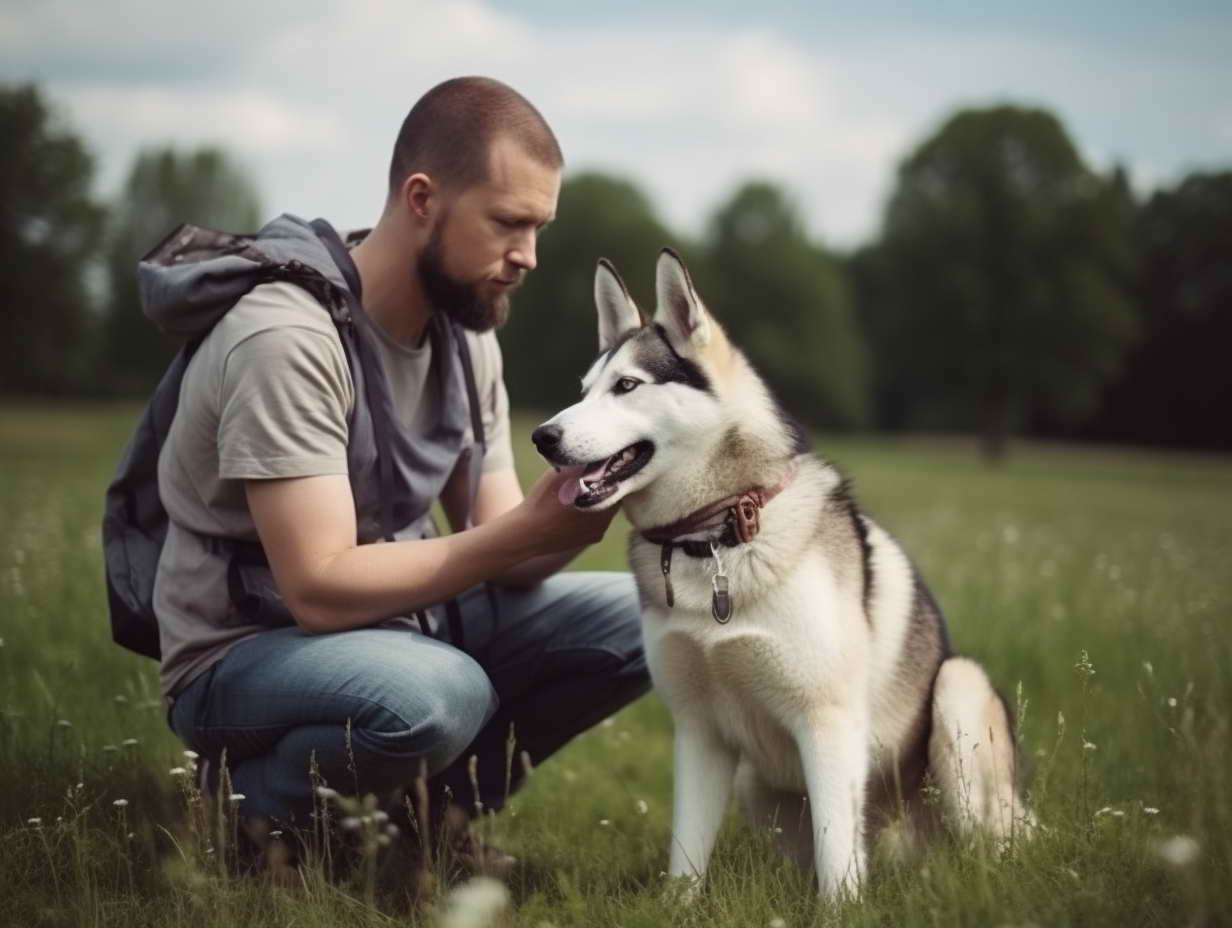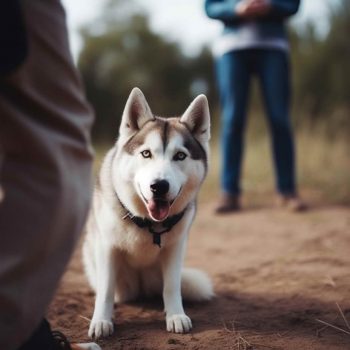Dog Training For Huskies: A Comprehensive Guide to Training Your Siberian Husky
Bringing a Siberian Husky into your life can be a rewarding experience. These intelligent and energetic dogs make great companions, but they require proper training to ensure they grow into well-behaved and happy pets. In this article, we’ll explore the ins and outs of dog training for Huskies. Whether you’re a first-time dog owner or looking for specific training advice for your Husky, you’ve come to the right place.
Why Training Your Husky is Crucial
Proper training is essential for Huskies due to their unique characteristics. Siberian Huskies are known for their high intelligence, strong-willed nature, and boundless energy. Without adequate training, they may exhibit undesirable behaviors, such as excessive barking, destructive chewing, or pulling on the leash during walks. By investing time and effort in training, you can foster a deep bond with your Husky and ensure a harmonious living environment for both of you.
Understanding the Husky Mindset
Before diving into training techniques, it’s crucial to understand your Husky’s mindset. Huskies are pack animals with a strong sense of hierarchy. They respond well to confident and consistent leadership but can be stubborn if they sense indecisiveness. Additionally, their working dog background means they thrive on mental and physical stimulation. Bearing these traits in mind will help you tailor your training approach to suit their needs.
The Building Blocks of Husky Training
- Positive Reinforcement Techniques:
Employing positive reinforcement methods is one of the most effective ways to train your Husky. These techniques involve rewarding desired behaviors with treats, praise, or play, reinforcing the notion that good behavior results in positive outcomes.
Using rewards like small treats or favorite toys will motivate your Husky to repeat the behavior you want to encourage. When they follow commands or exhibit good behavior, lavish them with praise and affection. This approach fosters a sense of trust and respect between you and your furry friend.
- Clicker Training:
Clicker training is a popular form of positive reinforcement that involves using a small clicker device to mark desired behaviors. When your Husky performs a correct action, you press the clicker and immediately reward them. The sound of the clicker becomes associated with positive reinforcement, making it easier for your dog to understand which behaviors you’re praising.
This technique is particularly effective for teaching complex tricks or commands, as the precise timing of the clicker helps your Husky associate the action with the reward.
- Consistency is Key:
Huskies thrive on routine and consistency. Ensure that everyone in the household follows the same training rules to prevent confusion for your dog. Consistent commands and responses will help your Husky understand what is expected of them.
- Socialization Skills:
Proper socialization is crucial for Huskies to become well-adjusted and friendly pets. Introduce them to different people, animals, and environments from a young age. Gradually expose your Husky to new experiences, always ensuring they feel safe and supported.
- Leash Training:
Huskies have a strong instinct to pull, which can make walks challenging. Leash training is vital to teach your Husky to walk calmly beside you. Use positive reinforcement during walks, rewarding them when they walk beside you without pulling.
Implementing a no-pull harness can also be helpful during the training process, gently discouraging pulling without causing discomfort.
Addressing Specific Behavior Issues
- Dealing with Excessive Barking
Huskies are known for their vocal nature, and excessive barking can be a nuisance. Identify the triggers for their barking and address them systematically. When your Husky stays quiet in a situation that would usually prompt barking, reward them immediately.
Engaging your Husky in mentally stimulating activities can also reduce their urge to bark out of boredom.
- Managing Separation Anxiety
Huskies are social animals and may experience separation anxiety when left alone for extended periods. Gradually acclimate them to your absence by starting with short intervals and gradually increasing the duration.
Provide them with interactive toys or puzzles to keep them mentally occupied during your absence.
- Stopping Destructive Chewing
Puppies, in particular, may engage in destructive chewing as they explore the world around them. To prevent this, provide appropriate chew toys and discourage them from chewing on furniture or other forbidden items.
If you catch your Husky chewing on something inappropriate, redirect their attention to a suitable toy.
- Crate Training for Huskies
Crate training can be a useful tool for housebreaking your Husky and keeping them safe when you’re not around to supervise. Introduce the crate gradually and make it a positive and comfortable space for your dog.
Never use the crate as a form of punishment, as it should be a safe and secure retreat for your Husky.
- Addressing Aggressive Behavior
If your Husky displays aggressive behavior, seek the assistance of a professional dog trainer or behaviorist. Aggression should be addressed promptly and appropriately, focusing on understanding the root cause and implementing positive behavior modification techniques.
Training Tips for Specific Commands
- Teaching “Sit” and “Stay” Commands:
The “sit” and “stay” commands are fundamental for any dog. Use positive reinforcement to teach your Husky to sit on command and remain in place until released.
Begin with short durations and gradually extend the time your Husky stays in the sitting position.
- Mastering the “Come” Command:
Teaching your Husky to come when called is essential for their safety and your peace of mind. Use high-value treats or toys to encourage them to come to you, associating the command with positive experiences.
Practice in controlled environments before testing their recall off-leash.

FAQs
How Long Does It Take to Train a Husky?
Training duration can vary depending on the individual dog and the complexity of the commands. Consistent training with positive reinforcement may take a few weeks to several months for significant results.
Are Huskies Difficult to Train?
Huskies are intelligent but independent dogs, making them moderately challenging to train. However, with patience, consistency, and positive reinforcement, they can learn commands effectively.
Can Huskies Be Off-Leash?
Off-leash activities are not recommended for Huskies, as their strong prey drive and independent nature may lead them to wander off. Always keep them on a secure leash or in a safely enclosed area.
What Should I Do If My Husky Refuses to Listen to Commands?
If your Husky appears unresponsive to training, reevaluate your training techniques and seek professional assistance if needed. They might require alternative training approaches or behavior modification strategies.
Is It Necessary to Hire a Professional Trainer?
While some Husky owners can effectively train their dogs at home, others may benefit from the expertise of a professional trainer, especially for addressing behavior issues or advanced training.
Can You Train an Older Husky?
Yes, you can train an older Husky. Although puppies learn faster, adult Huskies can still acquire new skills with consistent training and patience.
Conclusion
Training your Husky is a fulfilling journey that strengthens your bond and creates a well-mannered and happy companion. By understanding their unique traits and employing positive reinforcement techniques, you can overcome training challenges and nurture a loving relationship with your Siberian Husky. Remember to be patient, consistent, and always reward good behavior. With time and dedication, your Husky will grow into a well-trained and delightful member of your family.


Leave a Reply